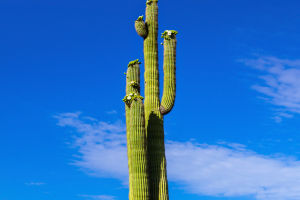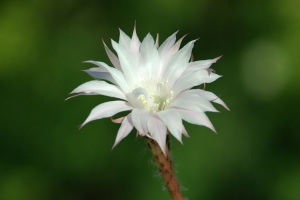Let’s explore something wild and wonderful together—the baobab tree, also known as Adansonia digitata. This giant beauty isn’t just a tree, it’s a survivor, a natural pantry, and a healer.
Native to tropical Africa and the Arabian Peninsula, the baobab now grows in parts of southern China too, thanks to human cultivation.
At first glance, it looks like its roots are sticking up in the air. This strange appearance has given it a nickname—“the upside-down tree.” But there’s so much more to this ancient wonder than just its looks.
The baobab’s superpowers go far beyond survival
This tree is famous for its incredible ability to live for thousands of years and store up to 32,000 gallons of water in its thick trunk. That’s how it survives in the dry savannahs of Africa. Some say they’ve seen baobabs as old as 2,500 years!
But survival isn’t its only trick. Its fruit is a real game changer. Known as a “superfruit,” the baobab fruit is packed with calcium—over 50% more than spinach—and three times the vitamin C of an orange. Its antioxidant levels are high too, making it a healthy powerhouse in a hard shell.
The flowers are stunning—and a little bit strange
Baobabs bloom with huge, white flowers that hang down like lanterns. They’re beautiful, but they don’t smell like roses. In fact, they smell a bit like meat. This odd scent actually attracts their main pollinators—fruit bats! Nature sure has its unique ways of making things work.
So what can we do with the baobab tree?
A lot, actually! The dried fruit pulp can be mixed with water or milk to make a refreshing drink. The leaves can be cooked and eaten—they’re said to taste quite good. Even the seeds are useful; they can be pressed for edible oil.
People in Africa have been using baobab for generations. It’s part of traditional meals, medicine, and even culture. But outside of Africa, it’s still pretty unknown. That might change soon, though, as people around the world start paying more attention to healthy, sustainable foods.
Growing a baobab takes patience—and a little help
If you’re thinking of planting one, it’s possible—but be patient. The seeds are hard to sprout, so growers usually soak or cut the thick outer shell first. With the right care and warm conditions, though, a little baobab can grow strong and tall over time.
Even in places where it doesn’t grow naturally, it can still be grown in large pots or greenhouses. It just needs warmth, sun, and space to stretch its roots.
The baobab tree helps people and the planet
Besides being useful, baobabs play a big role in the environment. Their wide trunks give shelter to animals and humans alike. Their roots prevent soil erosion, and their leaves and fruit improve nutrition and food security.
As a symbol of resilience, the baobab is also important to local communities. It represents strength, survival, and connection with nature. Supporting its cultivation could also help rural development and land sustainability efforts.
Why should we care about this tree?
This tree matters because it does so much more than just grow. The baobab supports daily life with its fruit, leaves, and seeds, all while helping to protect the environment. It provides food, improves health, and even supports local economies by offering natural resources that communities depend on.
It’s a symbol of strength and balance in nature. With its deep roots and wide branches, the baobab reminds us that nature offers practical solutions and quiet wisdom—if we choose to pay attention. So the next time we hear about superfoods or natural remedies, let’s not overlook this ancient and generous tree.
what do you think, Lykkers?
Have you ever seen a baobab in real life, or tried any food made from it? Would you grow one in your backyard if you could? Let’s chat about it! Nature has so many hidden gems, and together, we can keep discovering more.


